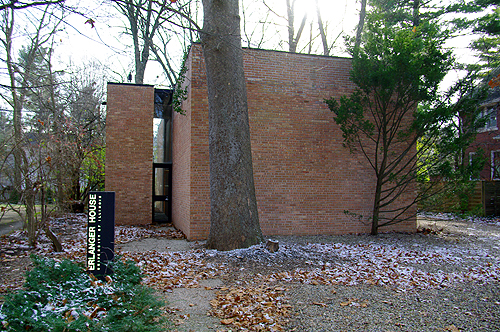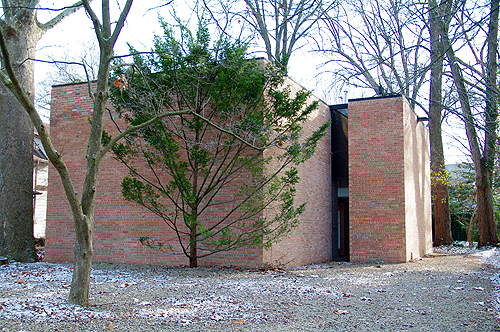International Style, 1920s-1940s
 |  |
The International Style was first described in a book of the same name by Henry-Russell Hitchcock and Phillip Johnson published in 1932. Their goal was to define a style during the formative decades of Modern architecture and in doing so they identified three key principles: the expression of volume rather than mass, the emphasis on balance rather than symmetry, and the rejection of ornamentation. The International Style was mastered by architects such as Le Corbusier, Ludwig Mies van der Rohe, and Walter Gropius who brought their ideas to America in the 1930s following their exile from Europe. These architects emphasized function over form, despised ornamentation, and refused to obscure the nature of the materials they used.
| |
Most International Style buildings were architect-designed. The style’s most distinguishable avant-garde characteristics include a simple, unadorned façade; no decorative detailing at the cornice, and around doors and windows; an open plan; a restrained material palate using mostly new industrial materials such as steel and glass and sometimes concrete; rectilinear geometry; a flat roof; and windows made up of massive panes of glass with metal casements that are flush with the wall surface. The façades of International Style buildings are bare and simple, with no extraneous decoration or ornamentation. The joints where materials meet were an important design consideration. Architects were meticulous when it came to the design of such purposeful details. Historic precedent was completely removed from International Style design. International Style buildings were radical new sculptural elements placed onto the landscape with no consideration of the building’s interaction with the landscape. It was design in a vacuum. | |
